
A couple of years ago, I decided that to really get a feel for what is being produced in the kosher wine world, I needed to make a yearly visit to France to taste through as much as I could, as only a percentage of these productions gets exported to the US, and an even smaller number of releases get exported to Israel (and sold at EXORBITANT prices). My friend David Raccah of kosherwinemusings.com has been doing this for years, and he invited me to join him. In November of 2019, I did a week in France gallivanting all around and tasting as much I could in various parts of the country. There was a lot of ground to cover a very short time. Of course, the COVID pandemic struck soon after that trip and basically there was no chance to repeat that trip in 2020. This November in between the Delta and Omicron waves, travel restrictions were mostly lifted for the vaccinated, and David and I were able to meet again in France. This time though, rather than travel around France and potentially expose ourselves to the virus unnecessarily, we decided to spend our time together in Paris exclusively and have as many tastings in Paris as possible, and where it was not possible to have a formal tasting, to have the wines shipped to us from various vendors. We ended up with three formal tastings with winemakers/producers; with one producer shipping us the wines; and buying the rest of what we wanted to taste either locally in France and having them shipped to the hotel; or purchasing them in Israel and me schlepping them with me to Paris (yes absurdly, there are French wines available in Israel that are NOT widely available in France). I landed late Sunday night and got situated in the hotel and rested up. David arrived on Monday morning and after dropping his stuff in the hotel we went directly to our first tasting – IDS.
IDS is one of the four big French kosher producers – Royal, Taieb, and Bokobsa being the others. While they are smaller in terms of bottles produced than any of the companies mentioned above, the only company that is really competition in terms of high-end portfolios is Royal. IDS does NOT try to satisfy every segment of the market. Usually they pretty much ignore all but the highest end – and, for the most apart, their wines are always excellent – even when they do dip their toes into the mid and lower range spaces. Perhaps the most famous properties they work with are Château Smith Haut Lafitte, Château Lafon Rochet, and Château Valandraud in Bordeaux and Château Sainte-Marguerite in Provence. Starting with the 2018 vintage, IDS started producing Burgundies with Maison Jean-Luc & Paul Aegerter, a relatively small producer and negociant in Burgundy. In 2018, they produced three red Burgundies at the Villages level and competed with the best kosher Burgundies that had been produced until then. In 2019, they produced only two Burgundies – this time a Premier Cru and a Grand Cru. While there were only two for the 2019 vintage, they are the finest kosher red Burgundies produced to date . With the 2020 vintage, IDS produced nine kosher Burgundies, eight of them reds (5 Premier Cru and 3 Villages) and, for the first time, a white. Based on the performance of the previous vintages, I was super-excited going into this tasting, and I was not disappointed. David and I arrived and met with Benjamin Uzan of IDS at their beautiful offices in the middle of Paris. Paris always blows me away. It’s got that beautiful European quaint feeling even in the middle of the city. IDS’s offices exemplify that. Really nice and old school feeling. In addition to the Burgundies, we tasted a white from Château Sainte-Marguerite and two red Bordeaux wines.
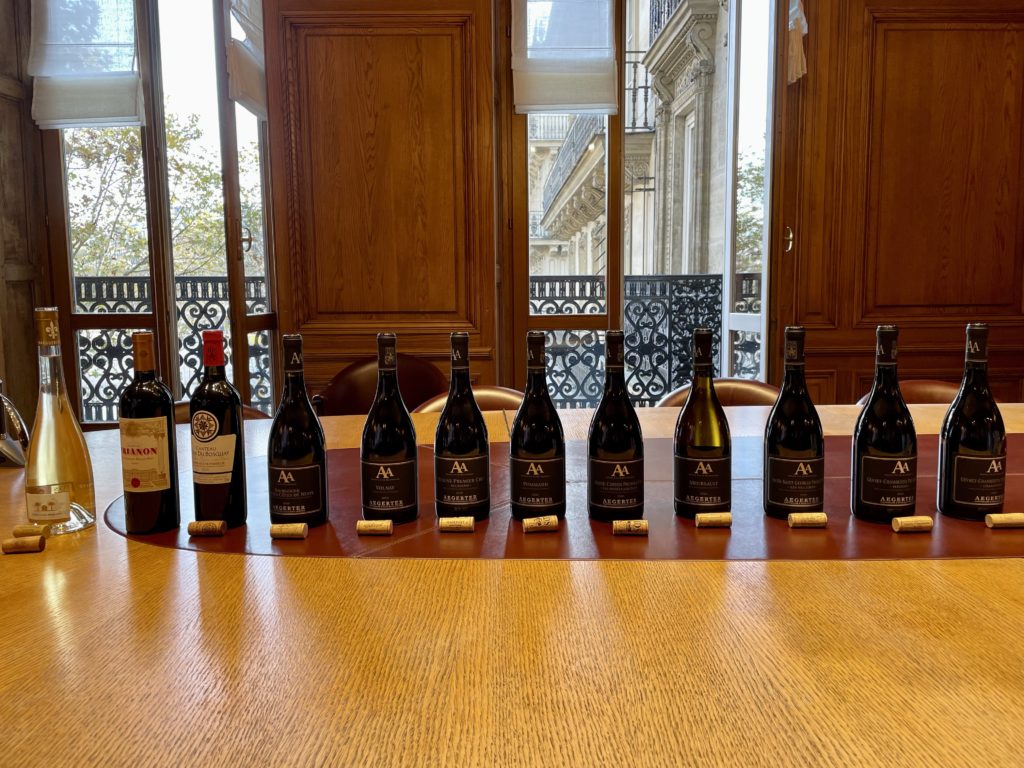
All in all, the tasting was excellent, as my notes below will show, and included one of the best whites I have ever had. There was a single issue though that ran through a number of the red Burgundies. It is something that David and I discussed at length both during and after the tasting. The issue (if you can call it that, as you will see in a second) is Volatile Acidity. I vacillated between whether or not to include a lengthy explanation of what it is and how it impacts wine and flavor. I know David did the same. In the end, in his excellent post he has already referenced the article that I would have, which is from Wine Spectator. I encourage you (as always) to read David’s notes in addition to mine as well as the WS article, if you are interested. But as David already did that, there really is no reason for me to rehash all of that. The only point that I will mention here is that sensitivity to Volatile Acidity varies by person. Under .6g per liter is undetectable by everyone, and above .9g per liter is detectable by everyone. Everything in between varies by person. Another factor in whether or not VA is detectable is the wine style it is found in. There are higher levels of VA in Botrytized wines for instance, yet it is rarely detectable on the palate. As there is a legal limit to how much VA is allowed in wines, all wines test for VA in the lab. Without knowing what the actual levels of VA are in these wines, it is pure speculation. My guess though is that it is somewhere in that grey area of between .6 and .9 grams per liter – likely on the lower side. It just happens that both David and I are sensitive to VA, and it is something that was clear on the palate. But we are likely in the minority here. As a matter of fact, these bottles were brought to an RCC dinner that night, and of the other 20+ people sitting around the table only two other people noticed anything different about these wines. On top of that, as some of the flavors VA produces are not necessarily problematic in terms of Pinot Noir, it is likely that most people will love these wines, as they are very well-made, and I really liked most of them them even WITH the VA. Having said all of that, take my notes and scores with a grain of salt whenever VA is mentioned as you may or may not get the same flavors on the palate that I did.
With that out of the way – here are my notes:
Provence and Bordeaux
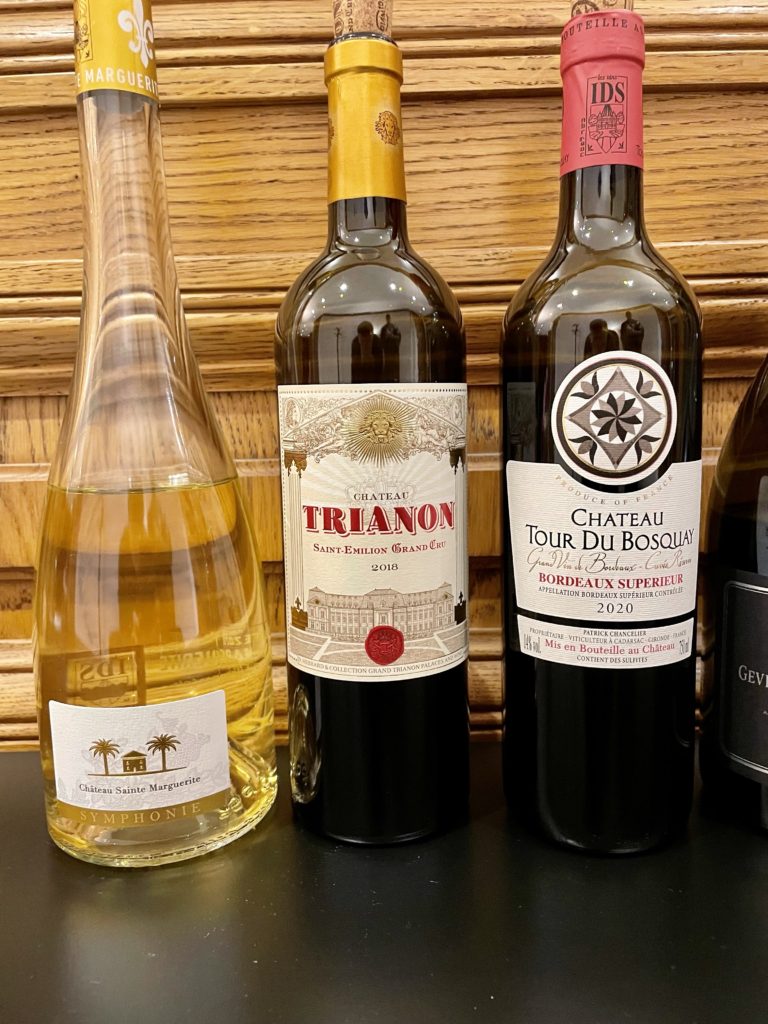
2020 Château Sainte Marguerite, Cuvee Symphonie Blanc, Cotes de Provence – I believe this is the first time we are getting a white from Sainte Marguerite as opposed to its famous Rosés. And what a way to start! Beautiful nose of almonds and nuts, and waves of flowers and fruit blossoms, with some peach in the background. In the mouth, the wine is rich, with really nice nectarine, apricot, and some peach with good minerality running through it. The acid is there to balance out both the sweet fruit and the weightiness of the wine, which really is nice as without it. I could see myself finding the fruit with that texture to be overwhelming – but with the acid, it’s totally balanced and really a treat. It is a wine that I could see myself drinking both with food or on its own and be perfectly happy. The richness really works. On the finish, we have some peach cobbler, with a little smoke and some salty-saline (a combo that works well and that I have been trying to replicate at home ever since in real peach cobbler) Very impressive. 92-93
(At this point we tasted the Aegerter Mersault – but I have grouped it together with the other Aegerter wines below)
2018 Château Trianon, Saint-Emilion Grand Cru – Made up of 90% Merlot and 10% Cabernet Franc, this wine is impressive. A really nice filthy nose with deep notes of violet and ripe but controlled focused fruit. In the mouth, the wine starts off really closed and takes some time to open but when it does, it takes off. Great black and blue fruit that is really deep again and layered. You have nice mineral and then some smoke with some nice earth and forest floor. The wine is really wonderful. (As good as this is, I hear the ’19 is even better and I’m looking forward to tasting it already). 93
2020 Château Tour du Bosquay, Bordeaux Superieur– This medium-bodied wine is 100% Merlot and a rare entry level wine from IDS. But when they do it, they do it right. Bright nose of red tart fruit and bramble. In the mouth, raspberry, and juicy red plum. The acid here is the focus, as it tames the fruit and almost cleans the palate for the finish – which is impressive, with some nice earthiness, more red fruit, and some crunchy green notes. The wine is not overly complex, but it is really nice. I have no idea what it will be priced at in the US or Israel but in Europe it 15 Euro and well worth it. 90-91
Domaine Aegerter 2020 Vintage
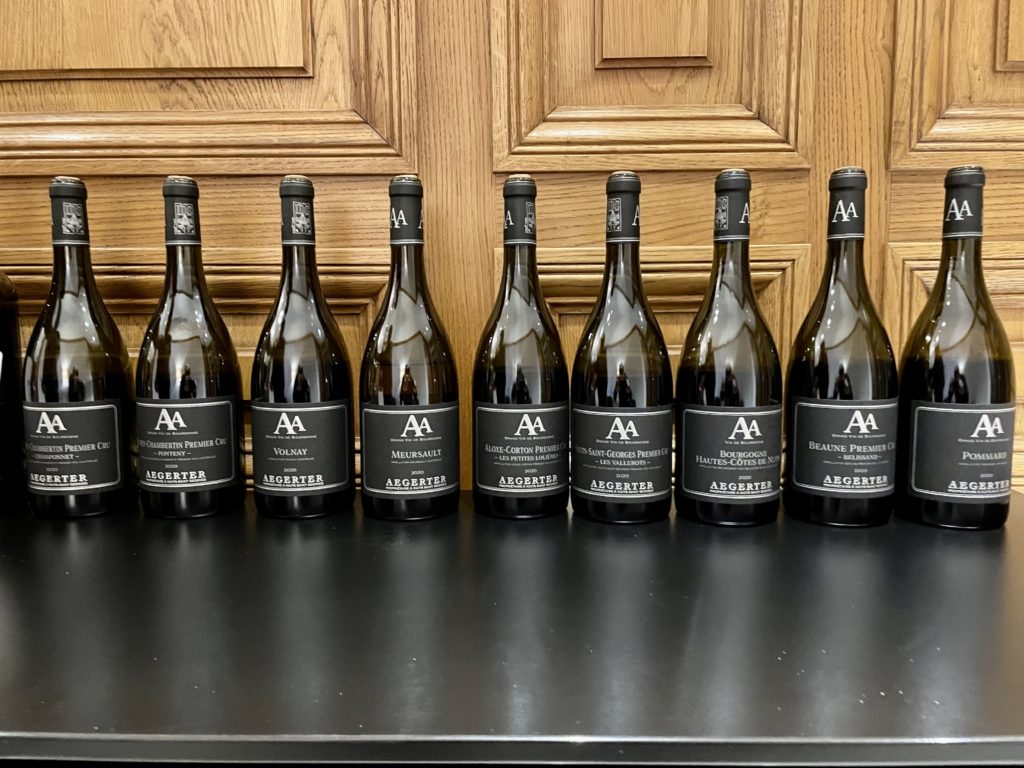
2020 Domaine Aegerter, Meursault – Well let’s get this out right off the bat. IDS has produced one of the all-time greats in terms of kosher white wines. Over the last decade, the white wine scene in general has taken off – but there have been a few real standouts – like the 2014 Von Hovel Rieslings and the 2019 Malartic Blanc. These are really the cream of the crop. Wines that you absolutely have to have. Well, you can add the 2020 Aegerter Mersault to that list. It is in another league. Easily the best kosher white Burgundy ever produced – and probably in the top three all time kosher whites ever made. Yeah, it’s that good. On the nose, crazy straw, wonderful funk, smoke, flint with pecans and some citrus. In the mouth, there is that incredible straw and hay with jasmine yellow plum, quince, and some beautiful flinty mineral. And the acid – oh, the acid! Much like the Marguerite above, this wine has a rich almost oily texture that the acid plays against SO well. As the wine sits in your mouth, the acid gets more aggressive, then the saline hits and just keeps you drinking this. This is a stellar wine. I am likely not doing it justice. The finish is incredible with thick hay, wonderful spice, a little more smoke, and some more blossom. This is a stunning wine. Really one of the best whites I have ever tasted. Only 1200 bottle of this were made. It’s something you have to snatch up when you have the opportunity. 94-95
2020 Domaine Aegerter, Bourgogne, Hautes-Cotes de Nuits – The nose here is KILLER with sweet cedar, plum, spit roasted meat, cherry, strawberry, and toasted herbs. If I were scoring the nose alone, this would get a 93. In the mouth, it a bit less impressive as there is that VA issue I mentioned above – so there is almost a balsamic vinegar note to it that is not my cup of tea. Other than that, the mouth follows the nose fruit-wise (cherry, strawberry, plum) but we lose all of the woody and green notes – which I am guessing are masked by the VA for me. Others will likely have a different experience, especially if they are not as sensitive to VA. 88
2020 Domaine Aegerter, Volnay – On the nose, this wine is bright with raspberry, redcurrant, sour cherry, earth, and roasted meat. In the mouth, this wine is dense and heavier than the Cotes de Nuits that we just tasted. It needs a little time to open for sure. In the mouth, it is very much in line with the nose, with tart ripe red fruit, raspberry, redcurrant, cranberry, and cherry. All of the greener and woodier notes missing above are present here with nice cedar, toasted herbs, and a hit of menthol. The acid is assertive and the tannin is mouth coating. This wine is a beauty and my absolute favorite of the 2020 Aegerter reds. Beware though, only 900 bottles were produced…. 93
2020 Domaine Aegerter, Beaune, Premier Cru, Belissand – The first of five Premier Cru wines produced for 2020 – and spoiler alert, the only one that has no detectable VA. On the nose, we have dark cherry, black plum, BBQ’ed meat, toasted herbs, and sweet cedar. Ultimately, it has the complete package – just a bit riper than one would expect. It’s just short of too much. In the mouth, this wine is even denser and heavier than the Volnay, with ripe dark cherry, strawberry, raspberry with sweet cedar, violet, and rose petals. The acidity here as with the Volnay is aggressive enough to balance out both the heaviness of the wine and the ripeness of the fruit. On the finish, there is some sweet tobacco and creamy milk chocolate. This is the most interesting and complex wine of the three so far, but just a touch too ripe. Still, it’s very, very good, and if you are looking for a budget Premier Cru – this is it, as it sells in Europe for 66 Euro. Unfortunately, only 600 bottles were produced. 92
2020 Domaine Aegerter, Pommard – Another perfect nose with everything that you would expect of a Pommard – beautiful floral notes, tart red cherry, raspberry, strawberry, and a nice earthiness. In the mouth, at first the nose carries through with the dark cherry and strawberry, but then the VA rears its head and we have some balsamic notes mixed in with the raspberry. The finish is nice with some roasted meat, earth, and rose petal. Again, I am going to guess that this wine presents differently to others. For me it’s an 88.
2020 Domaine Aegerter, Aloxe-Corton, Premier Cru, Les Petites Lolieres – Very dark red fruit on the nose, plum and cherry mostly, with rose and violet notes. In the mouth, you have the VA issue again, but it almost works with the wine in this case and is not overwhelming. You have nice raspberry, ripe cherry, some iron, toasted herb, and wet earth. There is good balancing acidity and gripping tannin here. On the finish we have chocolate, earth, herb, bramble, and a bit of salt. Overall a very nice wine despite the VA. 91
2020 Domaine Aegerter, Nuits-Saint-Georges, Premier Cru – This was the most challenging wine for me, as ultimately I can tell that there is elegance to this wine, but it’s still not for me. Again, the nose here was fine [By the way, in general VA is MORE pronounced on the nose. In all but the last two bottles, that was NOT the case with these wines]. In fact, it was more than fine – with beautiful delicate floral notes that gave the wine an almost spring-like aroma, followed by cherry, dark plum, and menthol. In the mouth, the VA really was at the forefront here and actually caused an almost effervescent sensation on my tongue as if there were some reaction. I think I was alone on this though, as David seemed to be able to taste through it. In any event, while there were some beautiful flavors under there, and the wine seemed to be built very well, I couldn’t get past the VA on this one and I’m not going to score it.
2020 Domaine Aegerter, Gevrey-Chambertin, Premier Cru, Fonteny – Here there is VA on the nose, which gives you that raspberry balsamic vinaigrette smell, but it is not off-putting, as there is plenty after to carry through with some smoked meat and some nice green woody notes. In the mouth, we have near black fruit of plum, cherry, and maybe even some blackberry. The finish is rich with mocha, chocolate, and some sweet tobacco. 90
2020 Domaine Aegerter, Gevrey-Chambertin, Premier Cru, Champonnet – Here the VA is the most pronounced on the nose. It’s straight up balsamic vinegar. There are other aromas there, like dark red fruit and smoked meat – but the balsamic was the primary aroma. In the mouth the VA is less pronounced overtly, but the wine does present on the sweeter side with ripe raspberry, and chocolate covered strawberry. 89
I want to reiterate again that the VA issue affects people VERY differently and, as such, please take that into account when considering these wines. As you can see, even with the VA, most of these wines scored decently; were the VA not perceptible to me most of them would score higher – and as I mentioned, there is a good chance that you will have less of a sensitivity to it than I do.
My thanks to Ben Uzan again for sharing these wines and spending so much time with us. It was a real treat!
Next up – Domaine Roses Camille….
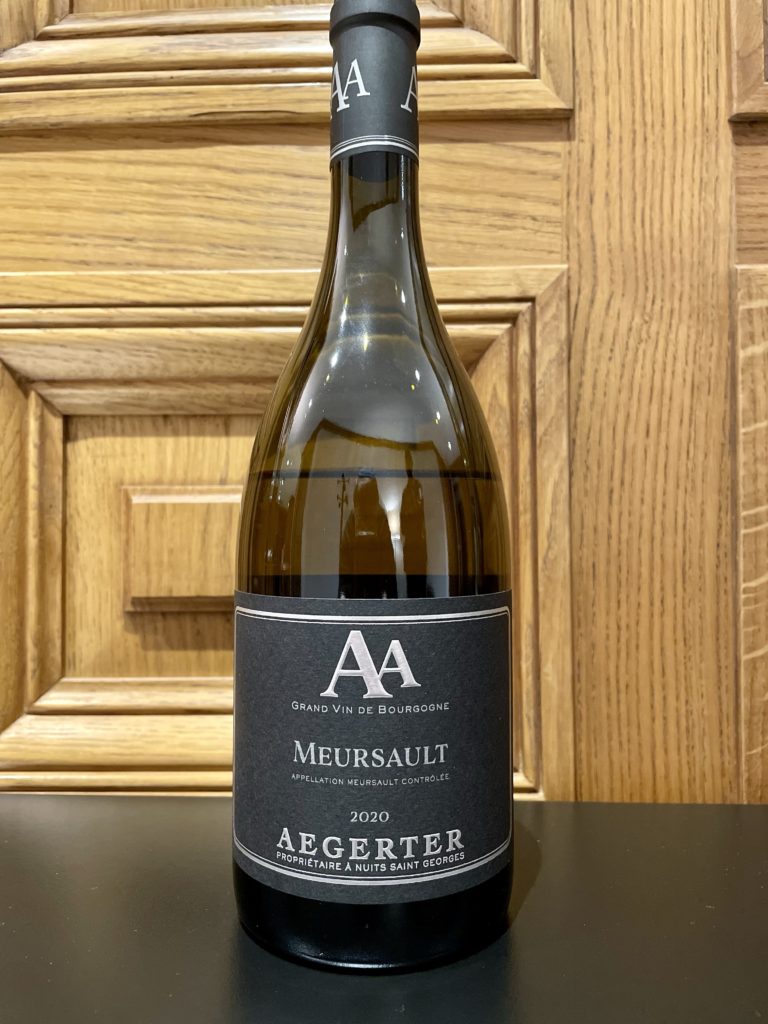
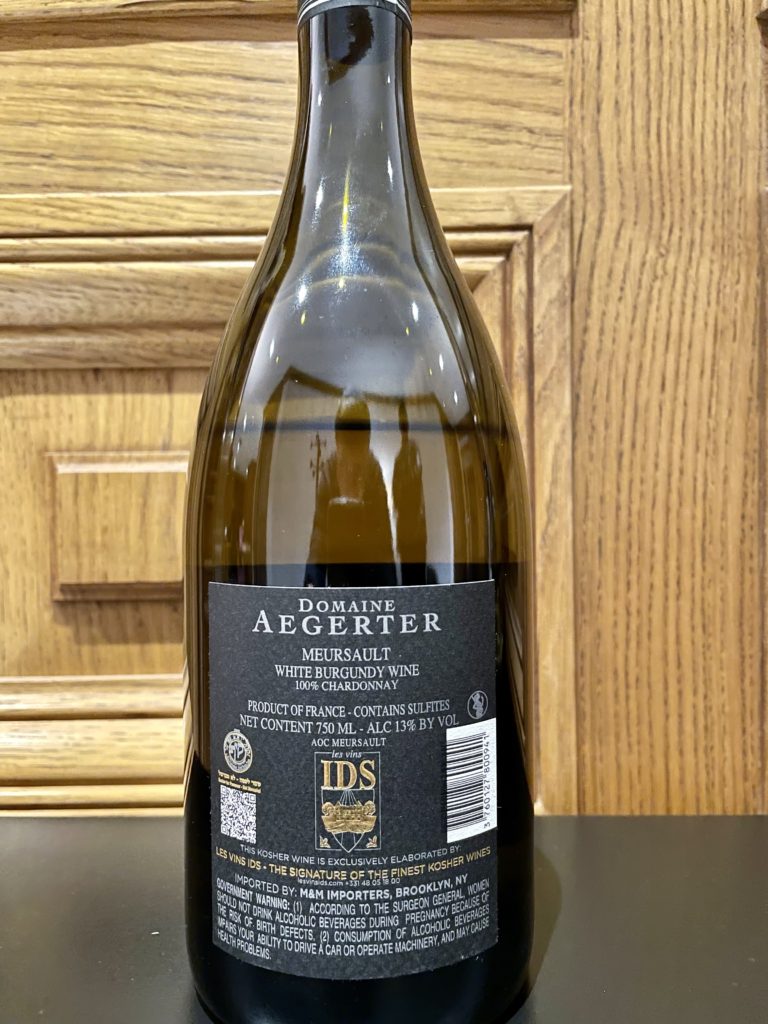
Wonderful resource thank you.
Would it be possible to provide a list of recommended wines to a local wine retailer like פיסטוק near אושר עד in Bet Shemesh with the intention of creating sufficient incentive for the wine retailer to order the wines knowing that there is a sufficient number of potential buyers.
Thanks again. You mentioned the price of 15 euro as a price for one of the wines you reviewed. Do you have any idea how much that would cost in Israel once you imported it?
Thanks Sol!
I can provide a list of wines to any store – but that won’t prove that it’s a good incentive to for them to invest in having better wines on the shelves. Much more important would be to put together a list of customers who frequent the store in question and let the owner know that this is what they are interested in purchasing. Regarding the 15 Euro wine I mentioned, a rule of thumb would be to double any European price here in Israel. That is Not ALWAYS the case, some wineries make an effort to keep their export prices somewhat in line with their domestic prices – or at least as close as possible – Elvi for instance – but that is the exception rather than the rule….
Pingback: Paris - November 2021 – Part 2 – Christophe Bardeau of Domaine Roses Camille - Kosher Wine Unfiltered
Thanks! They are available via Geshem Spirits – Shmuel Gottlieb – 052-474-1441
Pingback: Paris – November 2021 – Part 3 – Royal’s Truly Royal 2019 Vintage with Menachem Israelievitch - Kosher Wine Unfiltered
Pingback: France Trip 2022 – Part 1 – Bokobsa - Kosher Wine Unfiltered
Pingback: France Trip 2022 – Part 3 – IDS - Kosher Wine Unfiltered